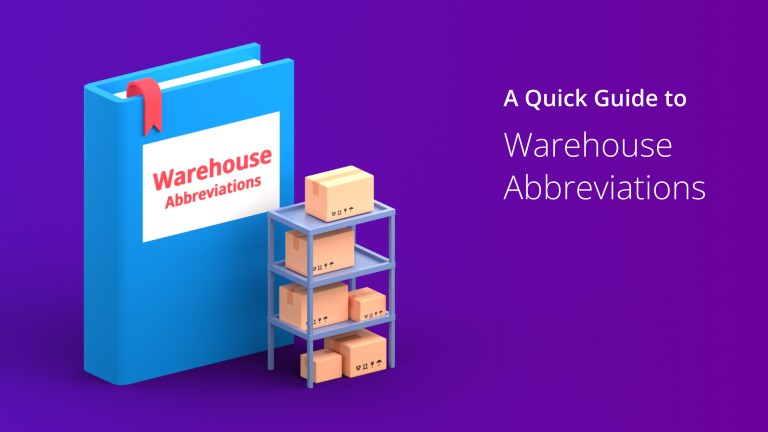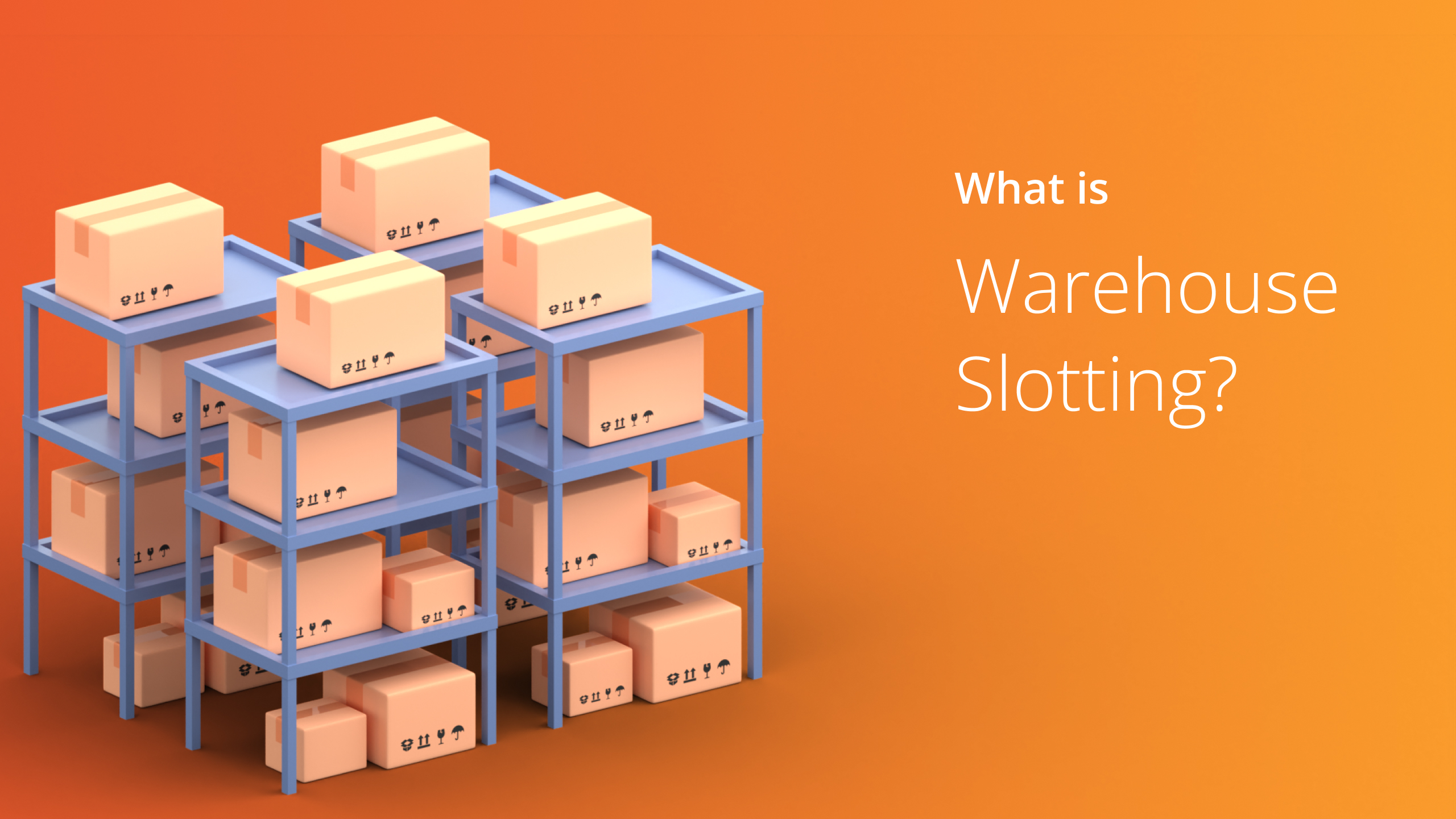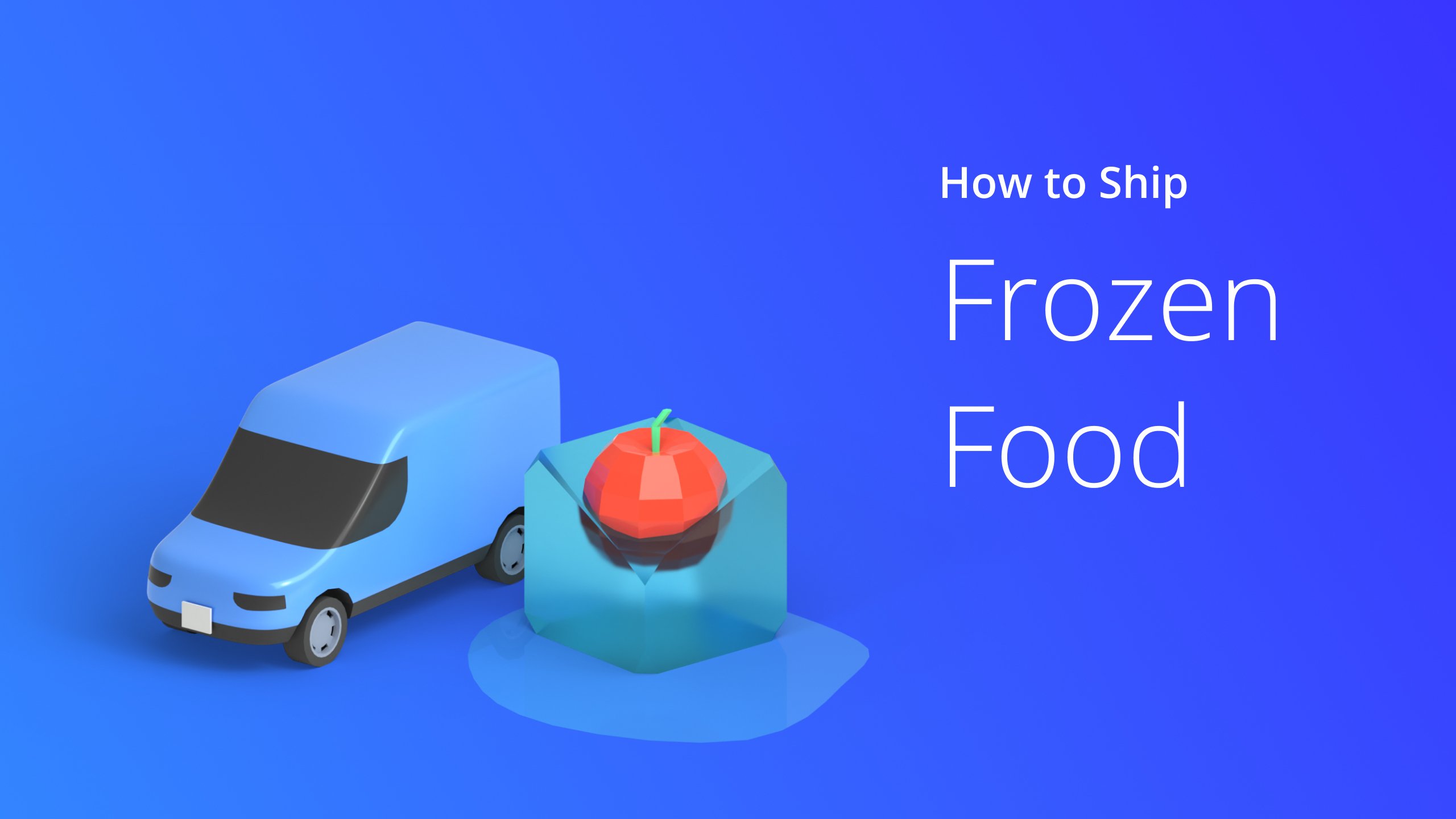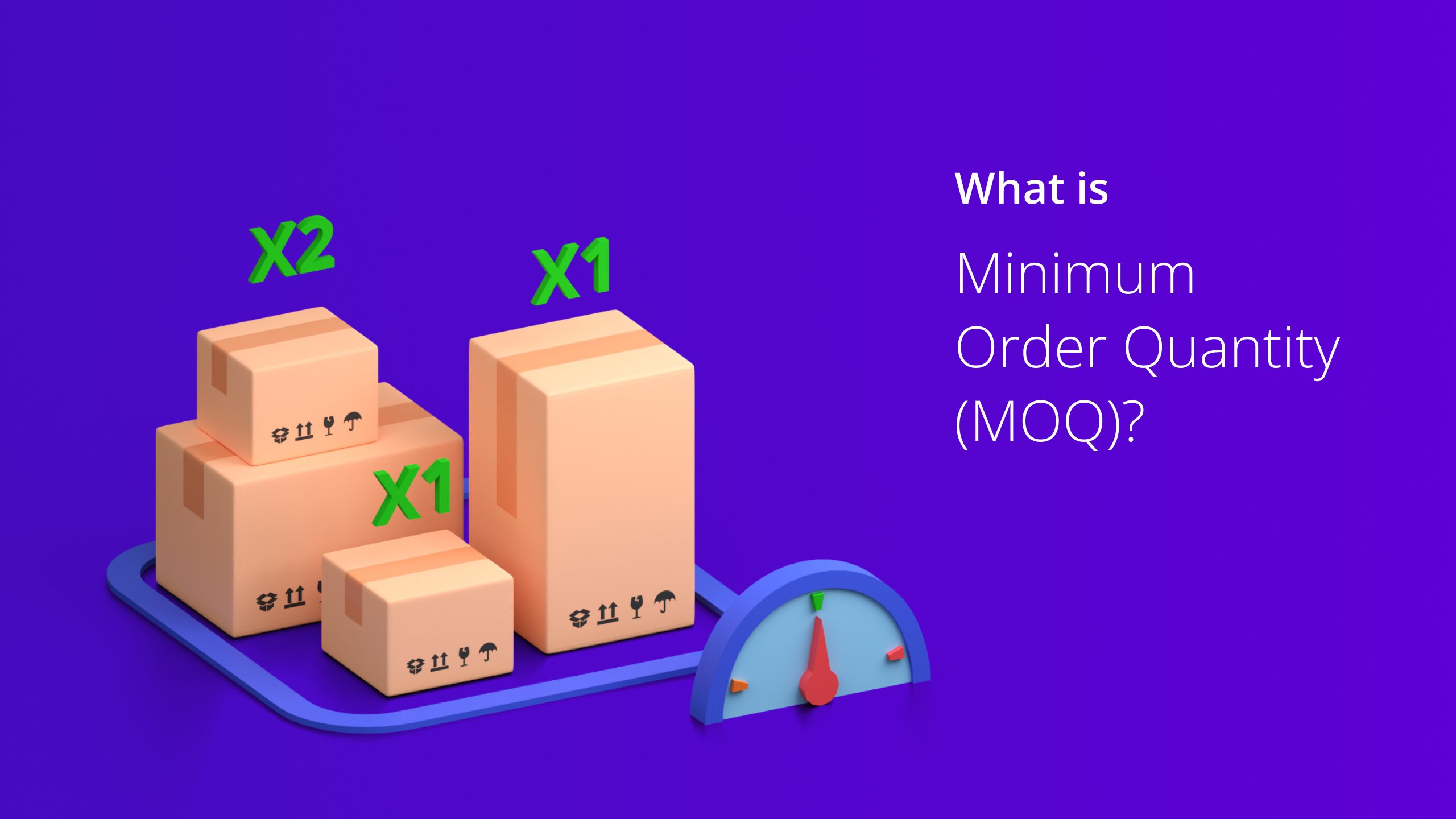Welcome to the world of warehouses, where everything from pallets to forklifts has its secret language.
In this blog post, we will unravel the mystery of warehouse abbreviations and decode the jargon that’s been leaving you scratching your head.
From LTL to FTL and SKU to WMS, we’ll break down the alphabet soup that dominates the supply chain operations to help you know enough lingo to tackle any warehousing task seamlessly.
Table of Contents
Common Warehouse Abbreviations
Here is a list of the most common warehousing abbreviations you must know.
Back Order
A backorder refers to an order placed by a buyer that cannot be immediately supplied or fulfilled due to insufficient stock or inventory.
This could be due to various reasons, such as delays in replenishment, inventory discrepancies, or unexpectedly high demand.
When an item is on back order, the customer must wait until the product is restocked or becomes available again for shipment.
Bar Coding
Bar coding is a method of labeling and tracking goods and inventory in a warehouse using unique patterns of bars and spaces containing encoded data. This could be the item number, description, quantity, and other relevant information.This helps businesses keep accurate stock levels, shipment status, and product movement records. Bar codes also help reduce errors as automated systems can process orders quicker and more accurately.Plus, bar codes reduce manual data entry errors, minimize paper-based processes, and speed up order picking and fulfillment. It also enables better visibility and accuracy in inventory management, improving efficiency, productivity, and customer satisfaction.
Pick and Pack
Pick and Pack is a process in warehouse operations that involves picking items from the shelves and bringing them to the packing station, where they are packaged before transportation.
Pick List
A pick list outlines items to be pulled from shelves and brought to the packing station.
The picker will review each item on the list and check them off as they are located and collected. Pick lists help streamline the pick-and-pack process by allowing warehouse workers to quickly find items, ensuring orders are accurately filled before transportation.
Batch Picking
Batch picking is a method of picking inventory in which orders are grouped together into batches or lots and selected in a single operation instead of picking items for each order separately.
It is also known as multi-order picking or cluster picking. Batch picking minimizes costly travel time associated with individual order processing, saving companies money by reducing labor hours and associated overhead costs.
Batch picking is particularly effective in warehouses with a high volume of small orders or where items are stored near each other. It can be further optimized by using barcode scanning or other technology to guide workers to the correct items and quantities.
Multi-Stop Route Planner App
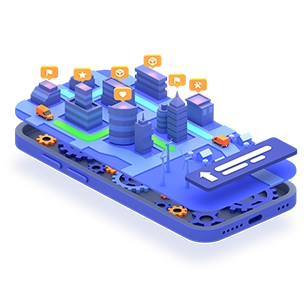
Cantilever Rack
A cantilever rack is a storage rack that stores long and bulky or irregularly shaped items, such as pipes, lumber, steel bars, or furniture.
These racks comprise vertical columns with horizontal beams or arms extending outward, creating a cantilevered structure.
The arms or beams are adjustable, allowing customization to accommodate varying item lengths or widths. They are designed to support heavy loads and provide stability and durability for storing long and heavy items.
Cantilever racks typically come in single- or double-sided versions. They can be used indoors and outdoors to maximize storage potential in warehouses, retail stores, workshops, and other similar environments.
Cold Storage
Cold storage is a specialized warehousing facility for storing perishable or temperature-sensitive goods.
These items are kept at frigid temperatures, from below freezing to just above freezing, depending on the requirements of the stored items. It slows the decay rate and keeps things from spoiling or becoming unhealthy.
Cold storage facilities come in all shapes and sizes, and you can use them for long-term preservation to short-term storage.
Cycle Count
Cycle count is a method used in supply chain management to keep track of the quantity and condition of items stored in a facility.
It involves regularly counting a subset of items in a warehouse to verify their accuracy and reconcile any discrepancies between the physical inventory on hand and the recorded inventory in the warehouse management system (WMS) or inventory management system (IMS).
Distribution Center
A distribution center is a warehouse facility that consolidates and redistributes items in smaller quantities.
These facilities are typically located close to major shipping routes and serve as the hub for receiving, storing, and shipping products.
Distribution centers often coordinate with suppliers, customers, stores, and other warehouses to ensure efficient delivery.
Route Optimization Software
Route optimization software like Route4Me can optimize pick-and-pack routes inside warehouses and yards for human and robotic operators.
The routing software creates a map of the warehouse or yard, creates a road network, and then uses an advanced algorithm to generate highly efficient routes.
You just need to specify information about the types of items stored in each part of the warehouse/cabinet/bin and their respective numbers. And the routing algorithm can direct robotic loaders or human operators to the nearest inventory pick location while ensuring they are not overloaded by weight or any other factor.
Route4Me’s delivery planner also provides real-time analytics about all routes inside a warehouse or yard, giving users insight into how their operations function and helping them adjust their strategy if needed.
A multi-stop route optimizer can also help plan well-optimized delivery routes to ensure timely deliveries. It considers various factors such as traffic, weather, delivery time windows, roadblocks, weight, height, and many more constraints. This helps drivers never get stuck on the road and reach their destination on time.
Below is a quick rundown of many valuable features a multi-stop route planner offers that make it indispensable in warehouse and delivery operations.
- GPS tracking to track the progress of each vehicle or driver in real-time and control reckless driving.
- Reporting and analytics to track fuel expenses and driver performance.
- Customer portal to enable end customers to monitor their package status.
- Customer alerting and notification to notify customers whenever their package is out for delivery, near their location, or has been delivered.
- eSignature to capture and store customer signatures electronically and facilitate electronic proof of delivery.
- Geofencing technology to reduce paperwork and automate check-ins and outs.
Learn the benefits of delivery scheduling software in detail.
Want To See For Yourself How Route4Me Can Optimize Pick-and-Pack routes efficiently ?

Dry Storage
Dry storage is a warehouse term that refers to storing non-refrigerated items. This type of storage typically involves keeping goods in an environment with a relative humidity level below 60%.
Because dry storage maintenance requires little energy and labor, it is often an economical way to store goods for long periods.
WMS – Warehouse Management System
A warehouse management system (WMS) is a software platform for tracking orders and shipments, managing inventory, and optimizing warehouse operations.
With a WMS, you can monitor stock levels and availability in real-time, increase order-picking accuracy, ensure efficient resource allocation, and reduce expenses.
First in, First Out (FIFO)
FIFO stands for ‘First In, First Out’ and is an inventory management methodology used in warehouses.
It requires that items be inventoried and withdrawn from the warehouse in the same order that they were received.
Using FIFO helps ensure that goods don’t remain on the shelf too long and become outdated or otherwise unusable.
This can help minimize inventory holding costs, optimize warehouse space utilization, reduce the risk of selling expired or obsolete products, and maintain accurate records for tax purposes, as the oldest items are always accounted for first.
Forward-Pick Location
Forward pick locations are areas within a warehouse designated for storing items that require regular and frequent retrieval. Such things typically have high turnover rates or must be accessed quickly for production.
These locations are typically close to the loading dock, making moving goods onto trucks or other transportation easier and faster.
Forward pick locations are often used in larger warehouses where multiple orders are being fulfilled simultaneously, as it helps improve picking and packing efficiency and reduce the risk of product mix-ups.
Gaylord Box
A Gaylord Box is a large reusable, multi-layered corrugated box or container typically used for bulk storage, transportation, and handling of goods within a warehouse or during shipping and transportation.
It is typically made from thick cardboard or plastic and has handles on either side for lifting and carrying purposes. Gaylord boxes usually store large items such as furniture, appliances, or bulk materials.
JIT – Just in Time
Just in Time (JIT) is an inventory management method that refers to receiving goods and materials only when needed, eliminating excess inventory and reducing the chance of overstocking.
This approach helps minimize storage costs and reduce the risk of spoilage or obsolescence due to goods sitting in stock for too long. By operating on a “just in time” basis, companies can optimize their workflow and remain agile enough to respond quickly to changing business needs.
Pallet
A pallet is a flat transport structure that moves goods around a warehouse or industrial facility. Pallets are typically made of wood, metal, or plastic and feature multiple stacked layers.
They can be moved with forklifts or other machinery and help to quickly move large amounts of goods while keeping them neat and organized.
Put Away
Put away involves accurately organizing items back onto shelves after receiving them from suppliers or after pickers have collected them for orders.
Put away ensures that items are stowed in the correct location and are readily accessible for future orders. This helps optimize inventory management and ensures warehouse workers can find products quickly.
RFID – Radio-frequency Identification
RFID is a technology widely used in warehouses to track and manage the movement of items.
RFID tags attached to pallets, containers, or individual items contain electronically stored data, such as item details and serial numbers, that can be wirelessly transmitted to RFID scanners using radio waves.
The RFID scanners then capture this information and send it to a warehouse management system (WMS) or central database for processing and analysis.
Receiving
Receiving involves inspecting items received from suppliers and storing them in the correct location. This helps ensure accuracy in inventory management, as any discrepancies between what was received and what was ordered need to be identified and addressed quickly.
Replenishment
Replenishment in a warehouse means restocking items as needed.
It helps maintain an adequate inventory for customer orders and prepare for the expected demand. Replenishment helps increase efficiency by having items available when needed, reducing time spent searching or waiting for items to be shipped.
SKU – Stock Keeping Unit
SKU is a unique code assigned to each item stored in a warehouse. This code helps track and identify the items and helps to quickly locate items when they are needed.
Safety Stock
Safety Stock or buffer stock is the inventory kept in a warehouse to protect against stockouts or unexpected supply disruptions.
It helps ensure that critical or popular items are never out of stock and provides a cushion to cover any sudden fluctuations in demand or supply.
Stock Out
A stock out indicates no inventory of a particular item in the warehouse. Stockouts often happen due to unexpectedly high demand for items, a disruption in the supply chain, or incorrect demand forecasting.
UPC – Universal Product Code
A Universal Product Code (UPC) is a unique 12-digit numerical identifier widely used in warehouses for product identification and tracking.
Zone Picking
Zone picking, also known as pick-and-pass or pick-and-pack, is a warehouse order fulfillment method to organize stock and speed up the picking process.
The process involves dividing a warehouse into multiple sections or zones,” based on weight, size, and/or location.
Each zone has its own picking team focusing on products in their assigned area, reducing time spent searching for items and enabling faster order fulfillment.
Conclusion about Warehouse Abbreviations
Understanding warehouse and inventory management abbreviations is essential for storing and distributing goods.
A solid grasp of these terms can help ensure that operations run smoothly, quickly, and efficiently. Utilizing warehouse abbreviations can also limit confusion, reduce costs, and increase customer satisfaction which will ultimately help create a prosperous business.
Do you want to see how Route4Me can automate your pick and pack processes? Try Route4Me for seven days for free and see yourself.
Want To See For Yourself How Route4Me Can Optimize Pick-and-Pack routes efficiently ?

